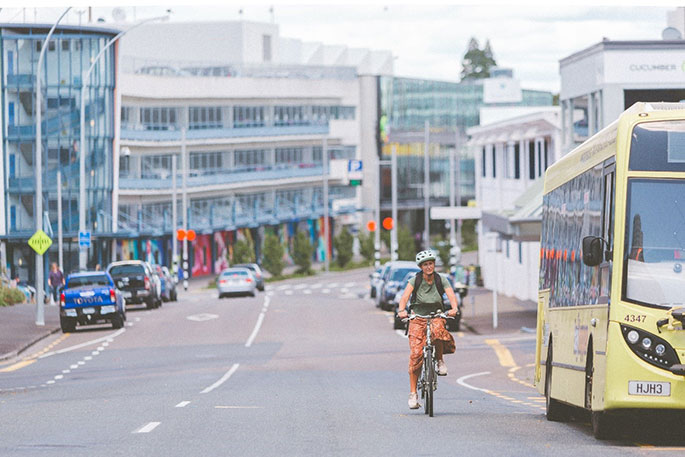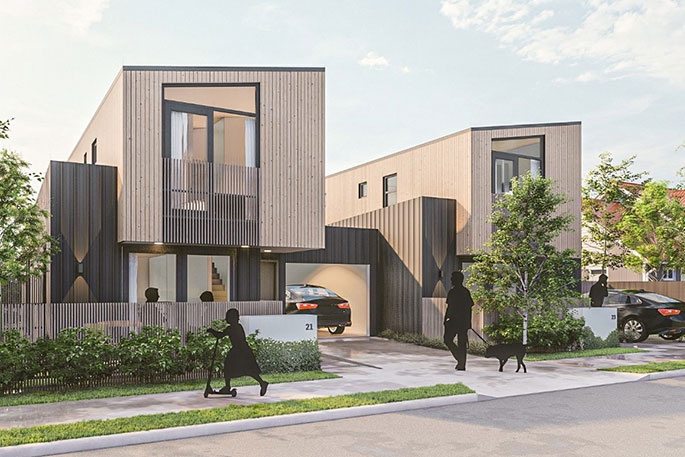Tauranga is New Zealand’s fifth largest city and is continuing to grow. It’s at a turning point – on the cusp of becoming a ‘real city’, but needing to make big changes for this to happen.
The challenge of the city’s growth, and the growth of the other main centres in our country is recognised at a national level, with central government providing very clear direction to councils on the need to provide for more housing and transport options, especially around centres.
Locally, despite a lot of work going into planning for growth over the years, the city is facing a growing housing shortage and higher housing and infrastructure costs.
So we need to change our approach. Instead of solely relying on expanding the city outwards, we need to put greater focus on planning for growth in our existing urban area. We need to work on placemaking in and around our town centres (including local shopping centres) and enable more people to live in those areas, with more compact forms of housing, community spaces, retail and other businesses.
 Enhancing and protecting Te Papa’s unique culture and history.
Enhancing and protecting Te Papa’s unique culture and history.
Tauranga City Council is working on making this happen, starting in the Te Papa peninsula – the area between Greerton and the city centre.
Together with stakeholders from across the board they are pulling together a 30-year plan for the area that aims at providing greater housing choice, safe and efficient transport options, local amenities and infrastructure needed to support healthy and connected neighbourhoods and communities.
There’s a lot of community benefits to be gained from growth and change, if it is well planned and supported by the right investment at the right time.
Better access to social and economic opportunities, improved environmental quality, neighbourhoods with a stronger sense of culture and identity for example.
Understanding what to invest in and when, to make this come true in Te Papa, is what council is working on right now.
 Connected neighbourhoods – providing for different modes of transport.
Connected neighbourhoods – providing for different modes of transport.
In parallel, to allow Tauranga to grow up as well as out, council is working on making Tauranga’s city plan more enabling of different types of housing.
At this stage the rules make it hard for people to build anything other than standard standalone houses.
This means we're not using land as effectively as possible to accommodate our growth, and the homes available on the market may not suit some people’s needs; like those of our ageing community, or of the increasing number of smaller households.
So council is working on changing the city plan to make it easier for people to build – if they want to – duplexes and townhouses/terraced housing in suburban areas across the city, and apartments in more central areas like Te Papa.
Enabling this makes sense – but how to ensure new builds both look good and that they’re buildings that people are happy to live next door to, that enhance the neighbourhood? That’s where the city plan rules come in, as well as new urban design guidelines that council is proposing.
 Architectural drawing: two-storey duplex.
Architectural drawing: two-storey duplex.
Council is now asking for the community’s feedback on their city plan proposals and their ideas for Te Papa. Information is available at www.tauranga.govt.nz/shapeyourcity, with an online survey to share your thoughts and the chance to win some Prezzy cards.
These could seem like strange times to be talking about city planning, and thinking so far into the future, when tomorrow is uncertain. Yet maybe there are no better times for this. Tauranga will likely continue to grow, people will continue to move here. We need to act now to ensure that growth is well managed, and that it creates opportunities for better homes, better neighbourhoods and a better city for us, our children, and our grandchildren.
- Sponsored Content



Leave a Comment
You must be logged in to make a comment.